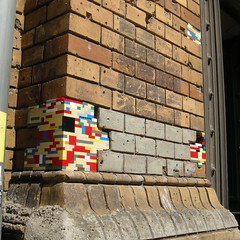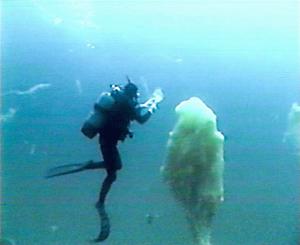Most people are at least marginally familiar with pneumatic tubes
systems – if you’ve ever made use of drive-through banking, chances are
you’ve encountered a limited example of pneumatic capsule
transportation. During the late 19th century through the turn of the
20th, though, pneumatic tube networks were extremely important
administrative systems used throughout the Western World.
Then,
these tube networks essentially served as a primitive version of
today’s internet (perhaps leading to former Sen. Ted Stevens’s
well-known confusion on the subject).
They were most often used for the speedy transportation of telegraphs
and other paper messages. In some places, pneumatic tube networks were
deployed to deliver mail across entire cities. An 1866 London system,
according to Wikipedia, was “powerful enough to transport humans”;
Prague, in the Czech Republic, to this day has a “network of tubes
extending approximately 60 kilometers in length” which “still exists
for delivering mail and parcels.”
Even in the United States, systems of pneumatic tubes remain in surprisingly
widespread use. Beyond banks, pneumatic tubes are employed especially
by hospitals, which are required daily to quickly transport small,
time-sensitive laboratory samples from one side of a complex to
another. Stanford Hospital is home to the largest such network:
Every day, 7,000 times a day, Stanford Hospital
staff turn to pneumatic tubes, cutting-edge technology in the 19th
century, for a transport network that the Internet and all the latest
Silicon Valley wizardry can’t match: A tubular system to transport a
lab sample across the medical center in the blink of an eye.
In
four miles of tubing laced behind walls from basement to rooftop, the
pneumatic tube system shuttles foot-long containers carrying everything
from blood to medication. In a hospital the size of Stanford, where a
quarter-mile’s distance might separate a tissue specimen from its
destination lab, making good time means better medicine.
[…]
The value of these pneumatic tube networks is not unique to
Stanford–they are in use at hospitals nationwide–but SHC’s system,
which also serves the adjacent Lucile Packard Children’s Hospital,
is one of the largest in the country. Its architecture is a
sophisticated design of switching points, waiting areas, sending and
receiving points. It hosts 124 stations (every nursing unit has its
own); 141 transfer units, 99 inter-zone connectors and 29 blowers. To
help alert employees to the arrival of containers, the system has more
than three dozen different combinations of chiming tones.
You can read – and see – more here.

![Reblog this post [with Zemanta]](http://img.zemanta.com/reblog_e.png?x-id=ec12235f-99f2-4033-9ca6-0e3778e43ce3)

![Reblog this post [with Zemanta]](http://img.zemanta.com/reblog_e.png?x-id=b78d6028-8e44-4412-87a8-e98e2321b3a4)



![Reblog this post [with Zemanta]](http://img.zemanta.com/reblog_e.png?x-id=39c621e3-e12c-40fa-a95f-0671c65e9579)


![Reblog this post [with Zemanta]](http://img.zemanta.com/reblog_e.png?x-id=683080f5-e255-4b6e-9e24-f871dbf11248)


